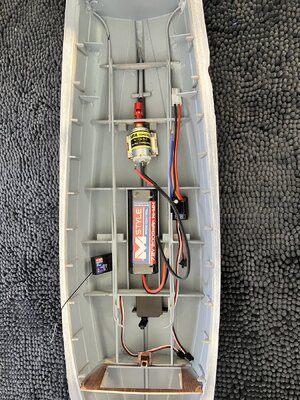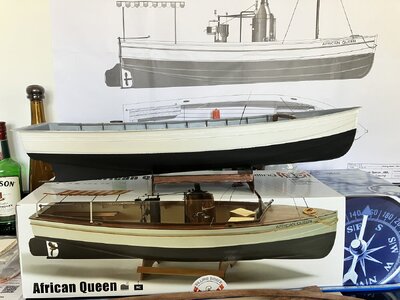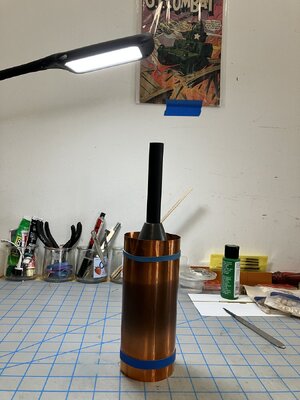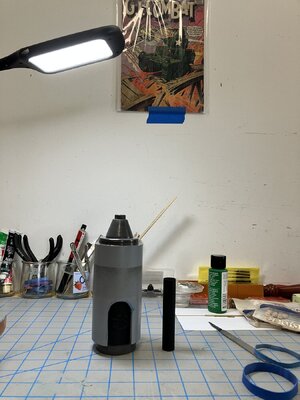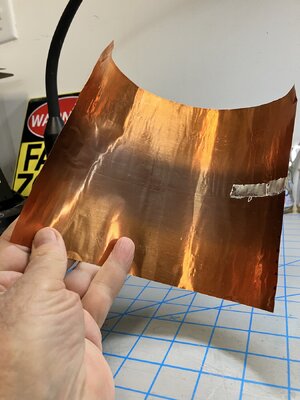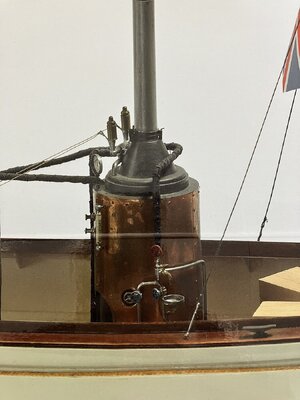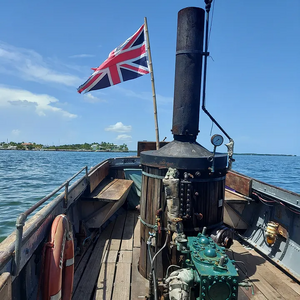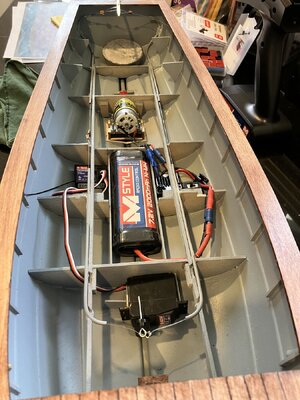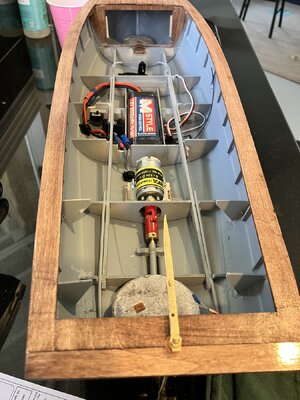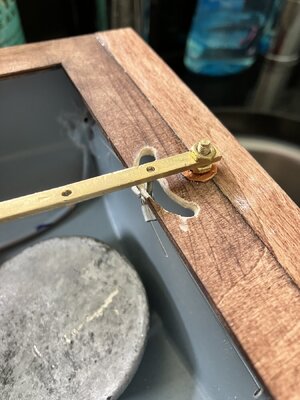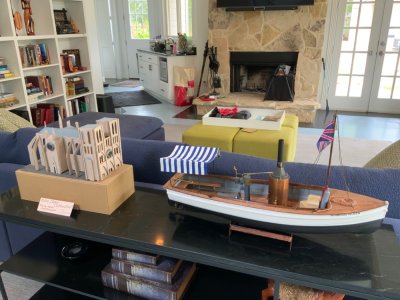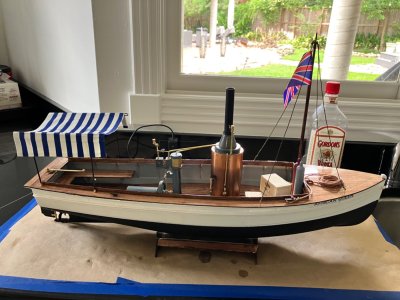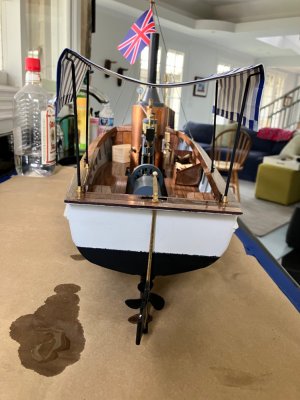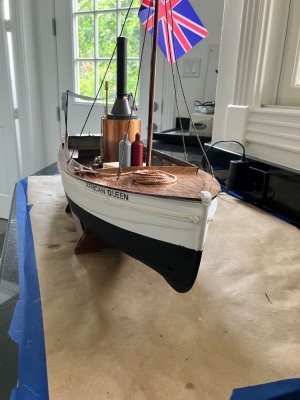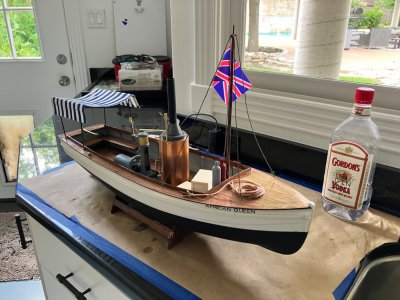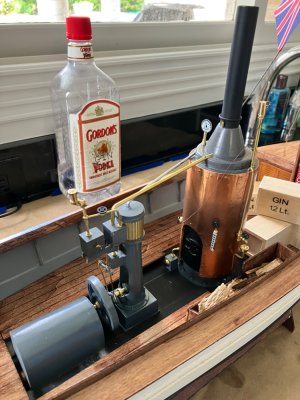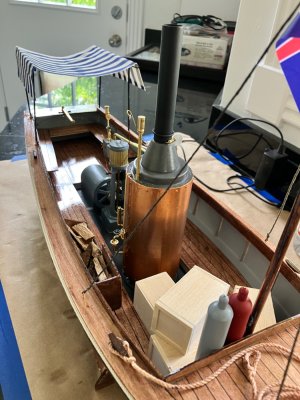- Joined
- Oct 1, 2023
- Messages
- 16
- Points
- 48

I have built a number of plastic and stick & tissue airplanes and a handful of boat models but this is my first attempt at so large a project. Here are photos of some past projects.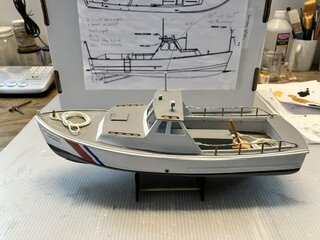
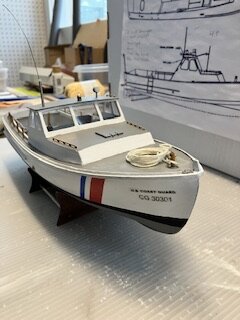
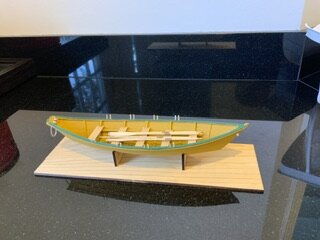
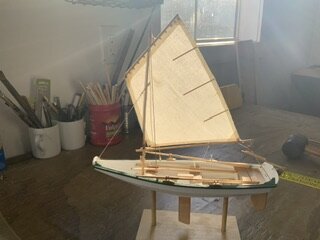
The African Queen will be different not only size but materials as well not to mention being RC and electric powered.
So here is what I have done so far.
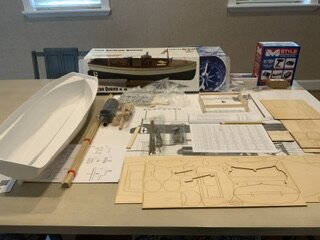 Unboxing.
Unboxing. 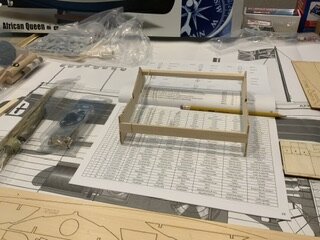 Built the cradle.
Built the cradle. 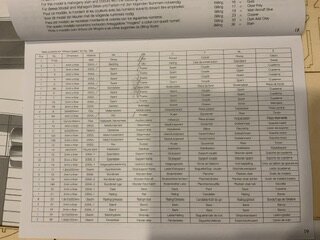 Review parts
Review parts
I also installed the rudder post which required cutting an opening in the hull which made me nervous.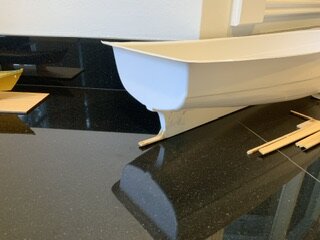
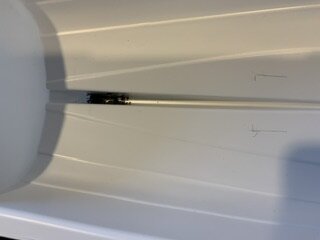 interior view of the epoxied rudder support.
interior view of the epoxied rudder support.
Next I have run into two situations that I could use a little guidance with:
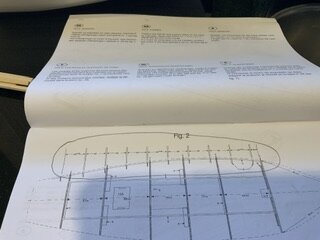 The circled area says I should place the deck supports 49mm apart but the rule shows (circled) is a straight line vs the curved hull. Would not the hull curvature require more than 49 mm between supports? How would I calculate/measure that? Or am I overthinking this?
The circled area says I should place the deck supports 49mm apart but the rule shows (circled) is a straight line vs the curved hull. Would not the hull curvature require more than 49 mm between supports? How would I calculate/measure that? Or am I overthinking this?
The other problem involves drilling another hole in the hull, this time for the propeller shaft. The instructions offer no measurements. Should I just shoot for the midpoint between the rudder support and the bottom of the stern overhang?
Any suggestions would be appreciated. Please also bear with me as I learn my way around building a Build Log!




The African Queen will be different not only size but materials as well not to mention being RC and electric powered.
So here is what I have done so far.
 Unboxing.
Unboxing.  Built the cradle.
Built the cradle.  Review parts
Review partsI also installed the rudder post which required cutting an opening in the hull which made me nervous.

 interior view of the epoxied rudder support.
interior view of the epoxied rudder support.Next I have run into two situations that I could use a little guidance with:
 The circled area says I should place the deck supports 49mm apart but the rule shows (circled) is a straight line vs the curved hull. Would not the hull curvature require more than 49 mm between supports? How would I calculate/measure that? Or am I overthinking this?
The circled area says I should place the deck supports 49mm apart but the rule shows (circled) is a straight line vs the curved hull. Would not the hull curvature require more than 49 mm between supports? How would I calculate/measure that? Or am I overthinking this?The other problem involves drilling another hole in the hull, this time for the propeller shaft. The instructions offer no measurements. Should I just shoot for the midpoint between the rudder support and the bottom of the stern overhang?
Any suggestions would be appreciated. Please also bear with me as I learn my way around building a Build Log!


